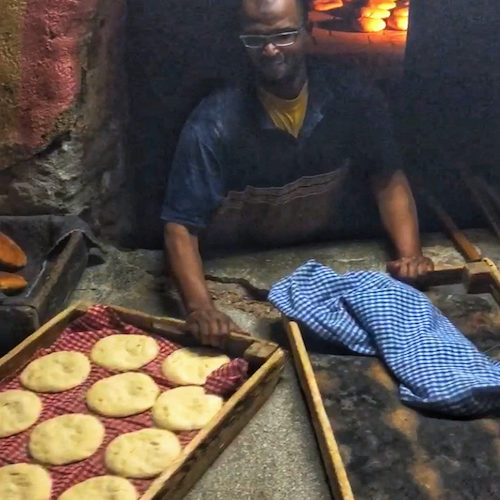
Tasting Moroccan Culture: The Fantastic Bread (and Bread Ovens) of Marrakech
I wanted to eat the air. I think that’s a first for me.
One night during my two-week trip to Morocco, I took a food tour through Marrakech, offered by Urban Adventures. If you have never taken a food tour, please allow me to highly recommend the experience. They’re very popular right now, and I’ve never been on a bad one. (For the record, neither Urban Adventures nor any of the other food tour companies I’ve used either gave me a discount or paid me to write that. But a girl can dream, right?)
Food and food rituals are part of all our of lives and occupy an important place in every culture. However, they’re so ever-present and natural to us that often all but the foodies overlook them. This is really too bad. Chatting with an ordinary person for even fifteen minutes about the kinds of food they associate with family, holidays, or traditions, is one the most interesting ways to learn about that person’s world. Investigating the backstory of what strikes you as one culture or another’s “strange” traditional dishes generally results in a crash course in that culture’s history. It’s also very time-efficient. Think about it: A cultural history lesson and dinner? That’s my kind of multitasking.
Follow Your Nose…
The second stop on the Urban Adventures tour was a bakery, but it would be more appropriate to call it a bread oven-ry (okay, that’s not a word, but I think it should be). Two massive wood-fired ovens dominated the small space, with every remaining inch devoted to holding large trays of dough or freshly-baked bread.
Food tours usually bill themselves as offering a “behind-the-scenes” or “authentic” look at the local food culture, taking visitors to places they’d be unlikely to find on their own. The Marrakech tour definitely delivered on this, but this bakery, hidden though it was in a nondescript alley, is one place I might have found myself. Not because of any insider knowledge but because of the sense-tingling aroma wafting out into the street.
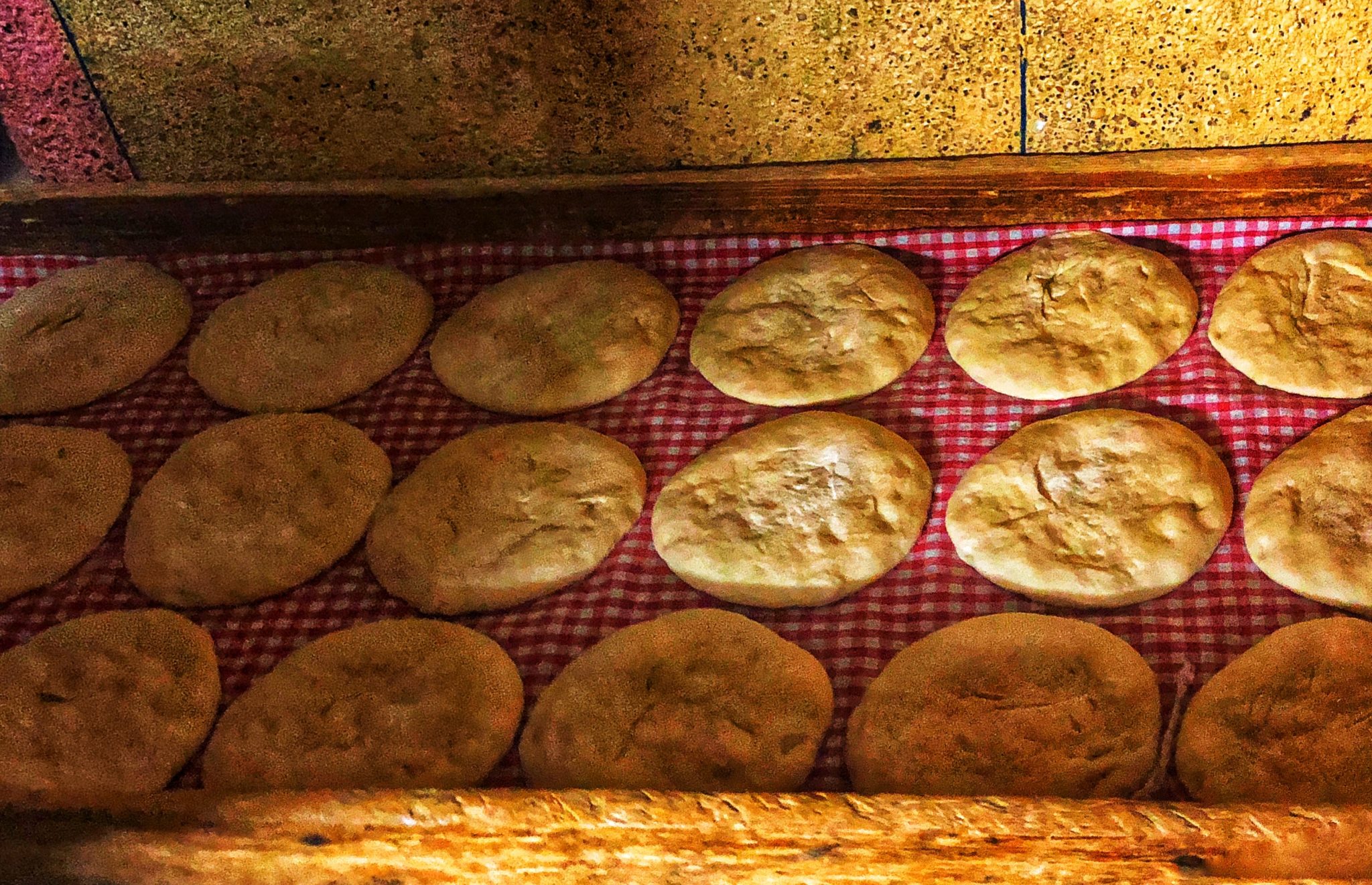
Fresh out of the oven! You can almost smell the bread through the photo!
Imagine the very appealing smell of freshly baked bread, then amplify it by, oh, I don’t know, three hundred percent. Add to that a hint of the sharp, smoky smell you associate with campfires, and contain it within a stuffy stone basement. That might give you some sense of how amazing—and intense—was the bread’s aroma. Believe me, I don’t think I have ever actually wanted to bottle up a scent or “taste” in some way the air around me.
The bakery was below street level, and visitors have to descend two or three sizable steps to enter. This, plus the smallish stone walls and dim lighting, made me think of some of the enclosed Roman ruins that I’ve visited over the years. But unlike ancient ruins, the bakery was humming was activity, as three men shoveled in and fished out dozens of bread rounds from clay ovens with remarkable speed.
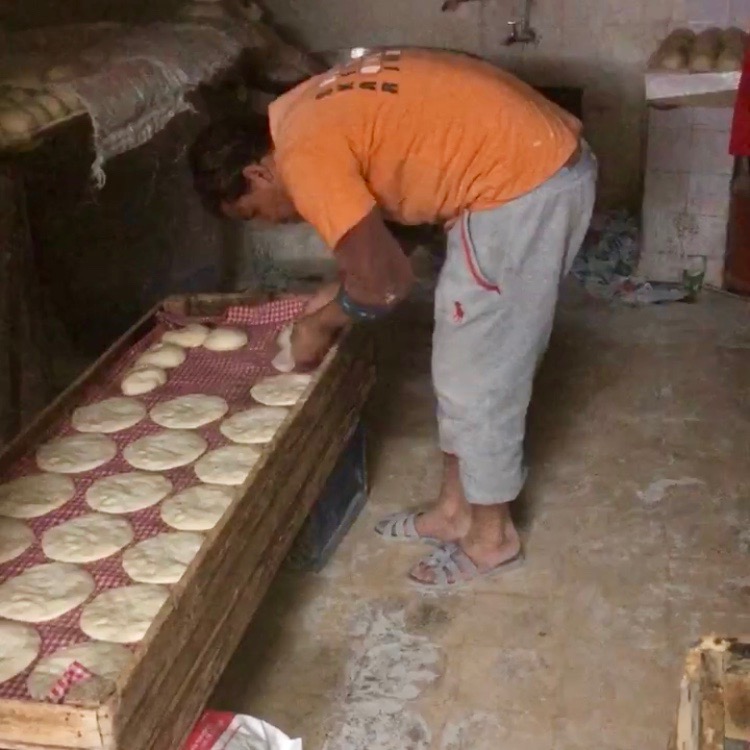
Prepping the dough in a little alcove about a dozen feet from the wood-fired oven.
Like Bread? You’ve Come to the Right Country.
Bread occupies a large role in Morocco’s culinary culture. In fact, I don’t think I ate a single meal over my entire trip that did not include at least two different kinds. Eventually, the ubiquitous bread became a kind of running joke amongst my traveling companions. “More bread?!” “So many carbs!” “I can’t eat anymore”—as we all helped ourselves to another piece.
From an early age, Moroccan children are taught not to waste to bread, and whatever does go stale is broken up into small bits and left for local animals. Bread is treated with such care that, according to tradition, if any is dropped on the ground it is immediately picked up and kissed. I never actually witnessed that for myself, but that might well have been because nobody was careless enough to drop any.
Bakeries like the one I visited in the Marrakech medina serve both a private and a commercial clientele, meaning they’re patronized by both ordinary people and street vendors. Most homes in the medina lack the necessary wood-fired oven, and the families that do have them usually don’t want to deal with the smoke. Some patrons rely entirely on the bakery’s own bread, while others prepare their own dough and drop it off either in early morning or early evening, picking up their orders about twelve hours later.
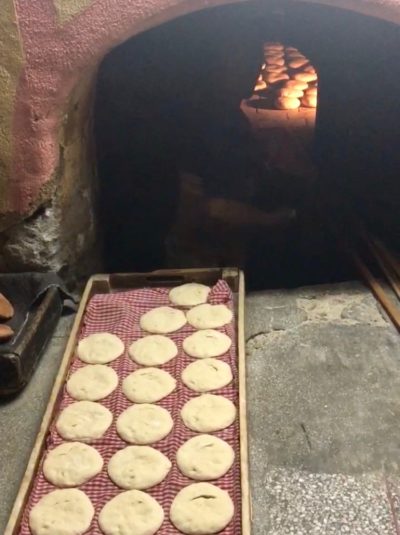
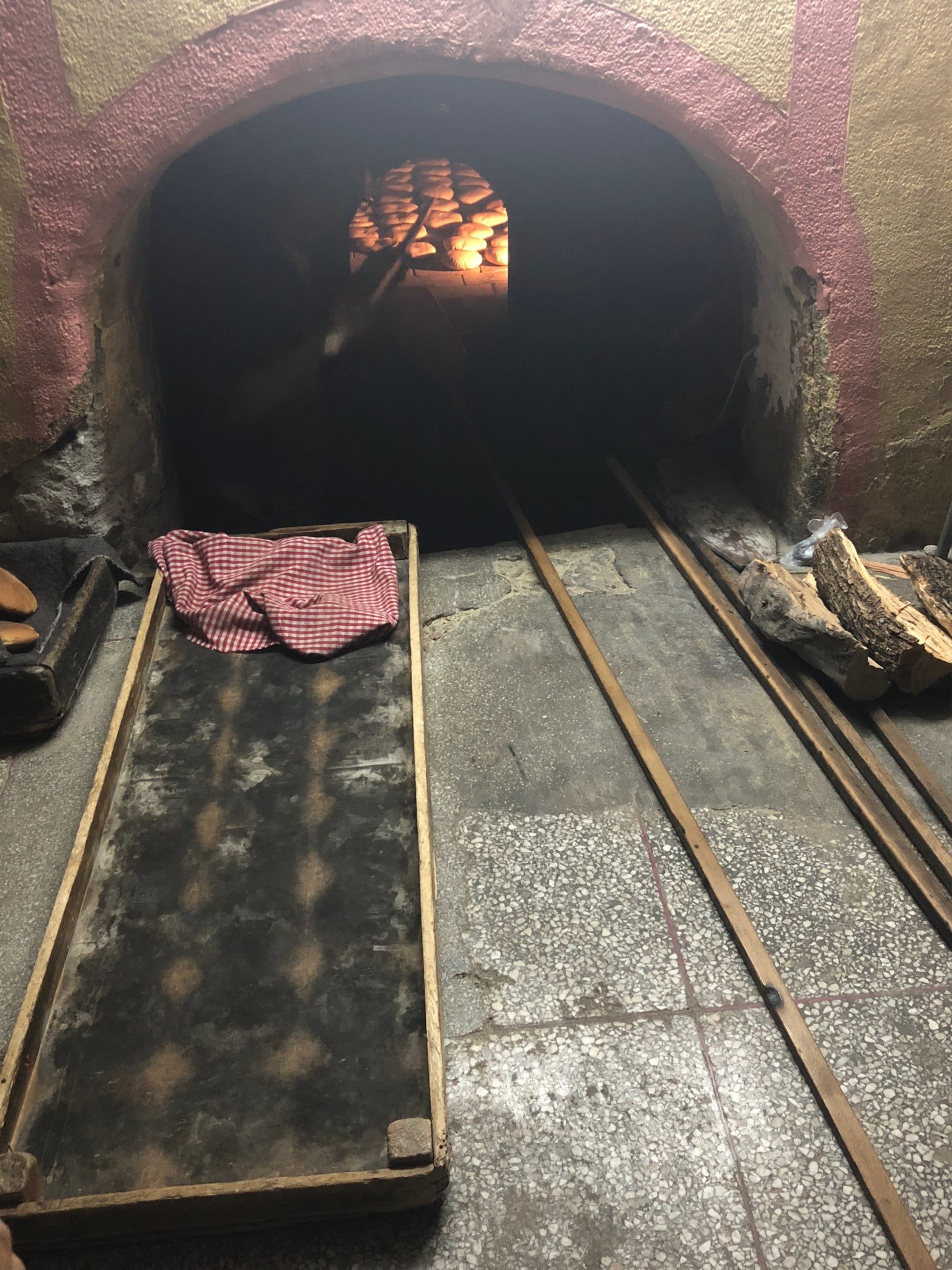
The ovens can accommodate about 200 pieces of bread at a time. The dough is transferred by hand, one or two pieces at a time, onto long wooden rails. The rails then quickly and smoothly slide the dough into the oven, pretty much just like you would see in a pizza kitchen.
Bread is available in the supermarkets, of course, but the community bakeries are not in any danger. Our guide explained that some women will buy supermarket bread out of convenience, but that virtually all families patronize traditional bakeries when shopping for holiday or Friday meals. And at least at this bakery in the huge and bustling Marrakech medina, the ovens run virtually around the clock. When I asked one of the bakers how late he’d be working that night, he just smiled and said “very late.”
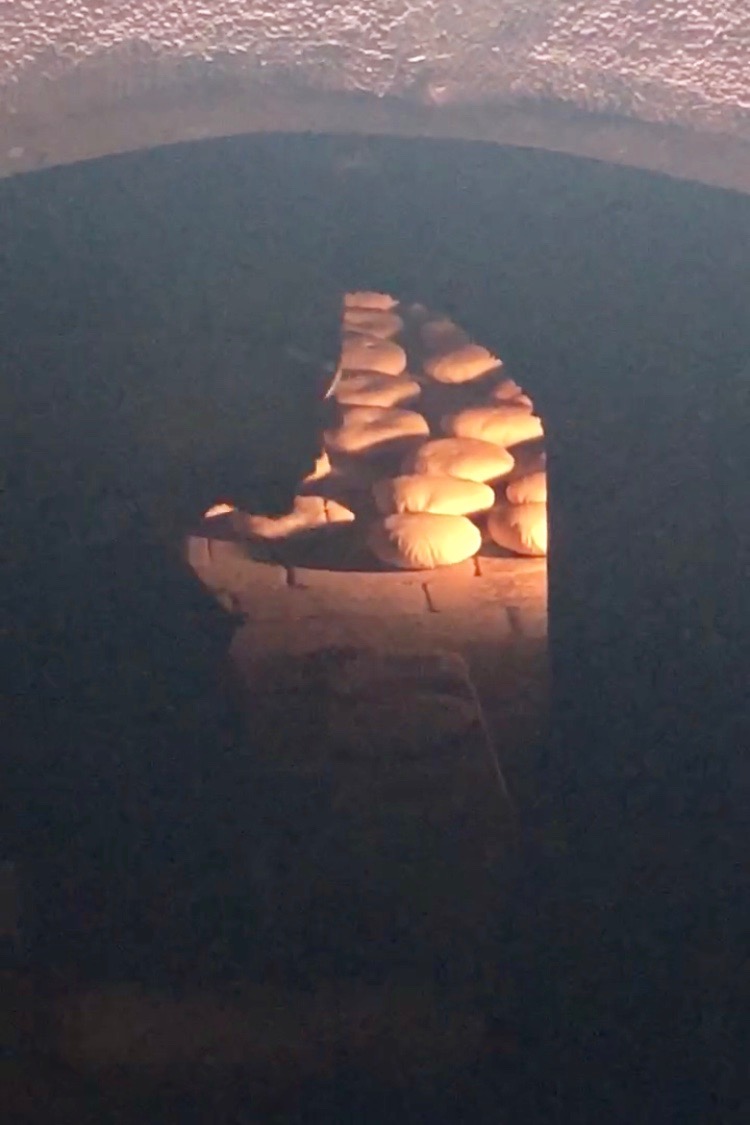
Hats off to this guy. I am definitely not tough enough for this job!
It’s a hard job, requiring skill and stamina. I was there in January, and even the mouth-watering smell of fresh bread could not entirely distract from the intense heat of the small space. The idea of being there in July makes me almost dizzy. Watching one man, standing several feet below ground, tending his batch, and framed by the orange glow of the oven, I was reminded of photographs of stokers shoveling endless piles of coal into huge, angry furnaces. It’s not a job I’d want, but the men took evident pride in their work and their role in sustaining two traditional cores of Moroccan culinary and community life.
And, of course, we got to taste bread right out of the oven. It did not disappoint. This picture is of our guide passing around samples. It’s not a great picture, but if you look to the bottom left, you’ll see a man with a phone. He was on our tour and was taking a picture of his two-year-old daughter. She was a picky eater, but she was gnawing on her round of bread like she was never going to let it go!
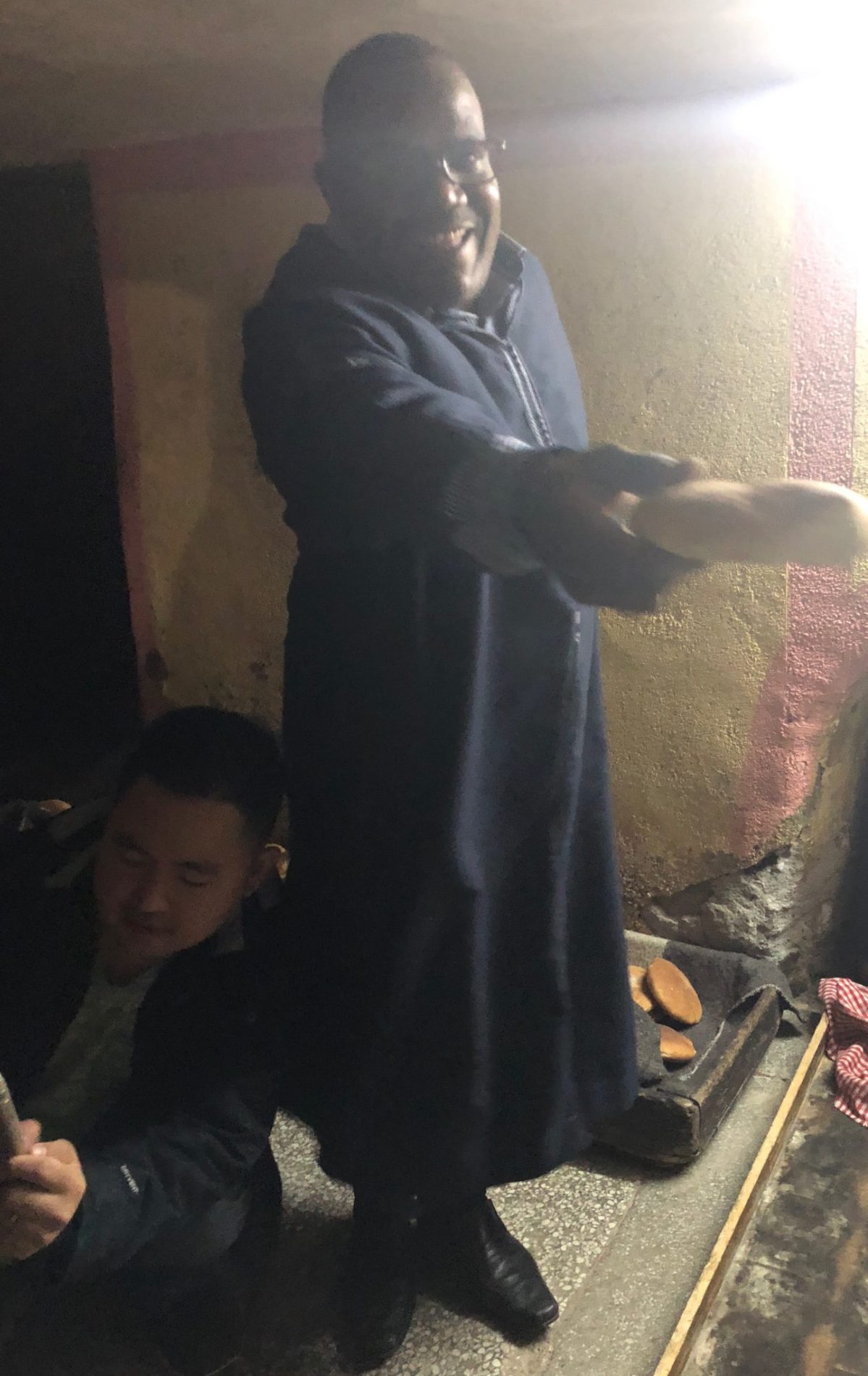
Have you ever taken a food tour? What foods do you think are key to understanding your own life or culture? Let me know in the comments section!

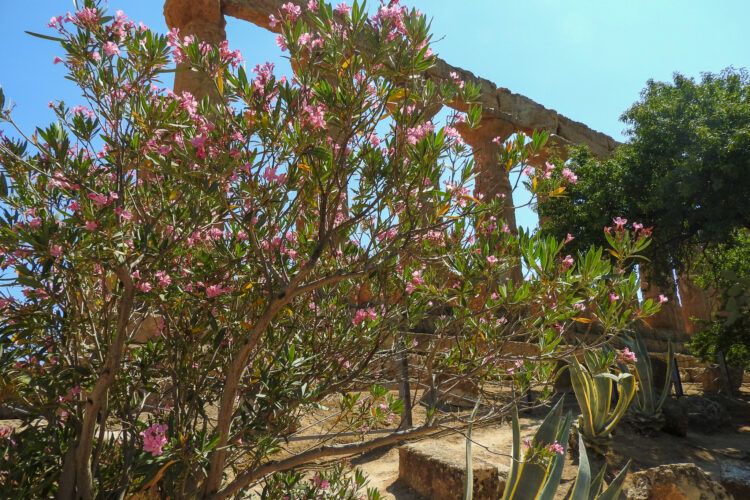
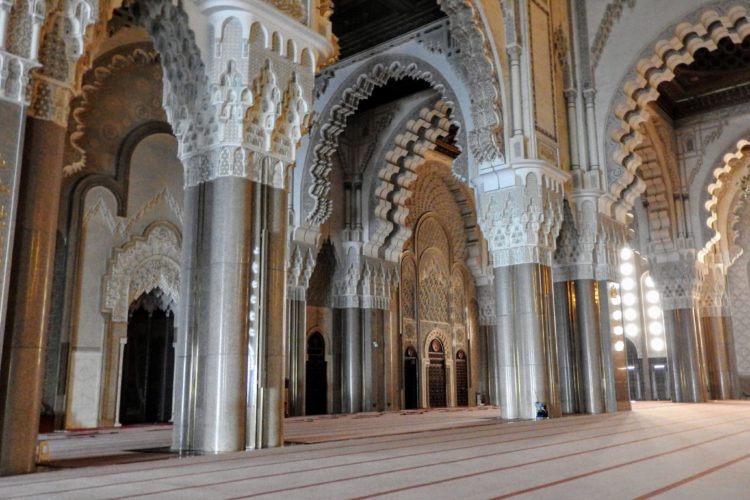

That bread looks delicious—and the processes by which they bake it are fascinating! I’d be interested to know how Moroccan bread compares with bread elsewhere in North Africa. Is it similarly prepared everywhere, or are there distinct regional and/or ethnic differences?